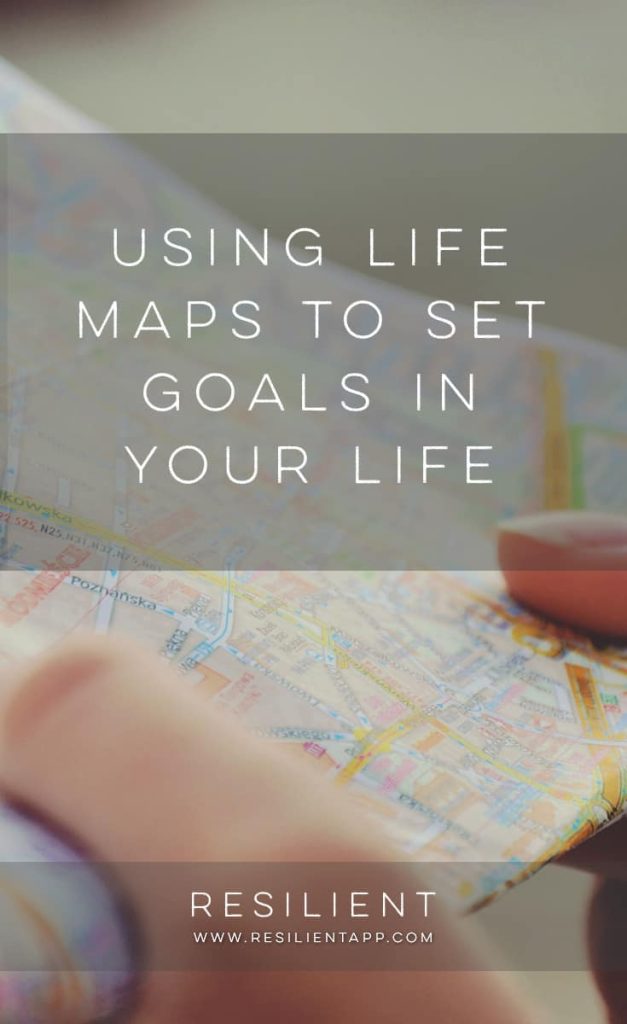Life Mapping: A Comprehensive Guide
Everyone’s life is a unique journey with various twists and turns, highs and lows. The road to success is often laden with obstacles, but one powerful tool that can help you navigate through these challenges is life mapping. Life mapping is a creative and strategic process that involves visualizing your life’s goals, creating a plan, and setting milestones to achieve them. By understanding your core values, strengths, and weaknesses, you can create a life map that leads to a fulfilling and purposeful life.

Life Mapping: A Comprehensive Guide
In this blog post, we’ll explore the concept of life mapping, its benefits, and a step-by-step guide to creating your own life map.
Subscribe to our Youtube channel!
What is Life Mapping?
Life mapping is a holistic approach to personal development, encompassing various aspects of life, including career, relationships, health, finances, and personal growth. By creating a visual representation of your aspirations and goals, you can gain clarity and focus on what truly matters. It’s like having a GPS for your life, guiding you through your journey to success.
Related Post: 20+ Simple Life Goals
Benefits of Life Mapping
1. Clarity and Focus
Life mapping allows you to identify your passions, strengths, and values, helping you gain clarity on your life’s purpose. It helps you prioritize your goals and focus on the steps needed to achieve them.
2. Accountability and Motivation
A life map provides a tangible representation of your goals, making it easier to track your progress and hold yourself accountable. Seeing your achievements mapped out can boost your motivation and encourage you to persevere even during challenging times.
3. Adaptability and Resilience
Life mapping helps you become more adaptable and resilient by allowing you to identify potential challenges and plan for them accordingly. As you navigate your life’s journey, your life map can be updated to reflect new goals and adapt to changing circumstances.
4. Personal Growth
Life mapping promotes personal growth by encouraging you to reflect on your experiences, learn from them, and use that knowledge to propel yourself forward. It enables you to recognize patterns, identify areas for improvement, and cultivate the necessary skills for success.
Products We Recommend:
How to Make a Life Map
A life map is a visual representation of a person’s life. It can have anything that has meaning to the owner such as key life events, emotions, people, goals and dreams. Life maps are used to gain self-knowledge, set personal objectives or just for fun.
There is no one right way to design a life map. Each is as unique as the person to whom it belongs. But if you have never made a life map before, it is best to start without a clear plan in mind. Being too rigid about designing your life map will defeat its purpose, which is to help you know yourself better.
Life Mapping Exercise
1. Reflect on Your Life
Before you begin, take some time to reflect on your life. Consider your values, strengths, weaknesses, and past experiences. What are your passions? What are your long-term goals? Understanding these elements will form the foundation of your life map.
2. Set SMART Goals
Define your goals using the SMART framework: Specific, Measurable, Achievable, Relevant, and Time-bound. This will ensure that your objectives are clear, realistic, and attainable.
3. Break Down Your Goals
Divide your long-term goals into smaller, more manageable milestones. This will make your objectives seem less daunting and help you maintain momentum as you work towards them.
4. Identify Potential Challenges
Consider potential obstacles you may encounter and brainstorm strategies to overcome them. By anticipating challenges, you’ll be better prepared to navigate them and stay on track.
5. Create a Visual Representation
Using the information you’ve gathered, create a visual representation of your life map. This can be done using various tools, such as mind maps, vision boards, or digital apps. Choose a format that resonates with you and allows you to easily update and modify your map as needed.
6. Review and Update
Regularly review your life map to track your progress, celebrate your achievements, and identify areas for improvement. Update your map as needed to reflect new goals or changing circumstances, ensuring it remains relevant and useful.

Creative Life Mapping
Using Life Maps to Set Goals in Your Life
For this method, grab a pen and a box of sticky notes. Take a deep breath and relax. Now turn your mind toward your life. Wait for thoughts to come to you. As they come, write each single word or phrase on a sticky note. Stick the note on a tabletop, a canvas or other large empty space. Keep writing as the ideas come. You might think of things such as college, money, marriage, your dream car, problems with family, the death of a pet, fears and worries, a vacation you’ve been wanting to take, hobbies – anything, really. Don’t censor any of it. Just keep writing until you get no more ideas.
Now look at these notes. Do you see a pattern? Are they mostly regrets, fears and bad experiences? Or are they goals, dreams and fantasies? Do they revolve around other people or just yourself? Do they all originate from a single, overriding emotion, belief or desire?
Arrange the sticky notes in a meaningful pattern. You might try grouping them into areas of life that make sense to you such as career, family, health and recreation. Or try making a timeline of events past, present and future.
Another way to arrange objects in your life map is in the form of a tree. Your name goes at the root or trunk of the tree, while items make the branches and fruit. It’s up to you. Give free rein to your imagination and creativity.
Working with Your Life Map
When finished with your basic life map, examine it. Do you like what it shows about you and your life? Is there anything you would like to take out of it or add to it? Why? What is most important to you in the life map? What makes you happiest? Who helps you realize the nicest things in your map? Do you see yourself realizing the dreams and aspirations shown in it?
If you are honest with yourself, the odds are you’ll see things in your life map that you aren’t pleased with. You may also notice things that you never thought were so important or influential in your life, yet figure prominently in the map.
Now make a new life map. Use a large blank sheet of paper, a large cardboard, the back of an old calendar or poster, or whatever you can find that’s big enough. This time, place only those elements that you want to be in it. Organize this new map the way you would like your life to be, not the way you see it is now (as shown in the first map). You will want it to be more structured and coherent than the other, free-flowing map. Still, be creative.
You might want to place your top priorities or favorite things at the top or center. Link related items together by drawing a line between them with a pencil (so you can erase it if you change your mind). Add details as the ideas come and connect them to existing elements in the map. For example, if one of your goals is to buy a house, you might add “pay off debt” and “make more money.”
Experiment with different layouts. Here are some ideas:
Life Map Examples
Pyramid: Your ultimate goal is at the apex; the steps toward that goal start at the base and work upward.
Timeline: You picture yourself attaining your goals through the years, one after another.
Five-pointed star: Your highest goal is at the middle point of the star, the foundations are the two lower points, and secondary goals are the two higher points.
Circle: Your life is cut into different segments, each its own goal.
Tree: The roots, trunk, branches and fruits symbolize the birth, growth and realization of your dreams.
This new map ought to show you not just what’s truly meaningful in your life and what you want to achieve; it can also help you discover ways to realize them. For example, if it’s your dream to become a published author, you may realize that some experiences you had can be turned into a book.
Keep organizing your new life map until you feel it accurately reflects your objectives. If you have the time and inclination, cut out pictures from magazines and newspapers and use those instead of sticky notes.
When you are happy with it, glue everything together on the blank sheet, cardboard or poster. Hang it somewhere or keep in a scrapbook. Look at it often to remind yourself of what you really want to do in this life. After a while, as goals and perspectives change, you will want to create a new version of the map accordingly. It’s important to keep it current and true to its owner. It is your life map, and yours only. Make it speak to you as a constant guide and inspiration.
Tips for Life Mapping
a. Be Honest with Yourself
When creating your life map, it’s crucial to be honest with yourself about your goals, strengths, and weaknesses. Acknowledge your limitations and don’t set unrealistic expectations. By being truthful, you’ll create a more accurate and achievable life map.
b. Embrace Flexibility
Life is unpredictable, and circumstances can change rapidly. Embrace flexibility and be willing to adapt your life map as needed. This will help you stay on track and remain resilient in the face of challenges.
c. Practice Patience
Achieving your goals takes time, effort, and persistence. Practice patience and remember that progress is often slow and gradual. Celebrate your small victories along the way and maintain a positive mindset.
d. Seek Support
Don’t be afraid to seek support from friends, family, or professional coaches. Sharing your goals and discussing your life map with others can provide valuable insights, encouragement, and accountability.
e. Prioritize Self-Care
While pursuing your goals, it’s essential to prioritize self-care. Ensure you maintain a healthy work-life balance, and make time for activities that bring you joy and relaxation. This will help you stay focused, energized, and motivated on your journey.
More Posts You Might Like:
- The 3 Day Rule That Can Change Your Life
- 25+ Self Improvement Tips
- 30+ Journaling Prompts
- How to Improve Your Life Overnight
- 10+ Personal Growth Books
Life mapping is a powerful tool that can help you create a purposeful and fulfilling life. By visualizing your goals, setting milestones, and anticipating challenges, you can navigate your journey with clarity, focus, and resilience. Remember to be honest with yourself, embrace flexibility, and seek support when needed. With determination and persistence, you can achieve your goals and unlock the full potential of your life map.
So, why not give life mapping a try? Start by reflecting on your life’s purpose and set SMART goals that align with your values and passions. Break down your goals into manageable milestones, identify potential challenges, and create a visual representation of your life map. With dedication and perseverance, you can use life mapping as a blueprint for success and personal growth.
P.S. Get free downloads, checklists, inspirational emails & more when you sign up for our Free Resource Library!

